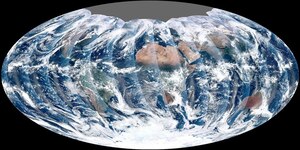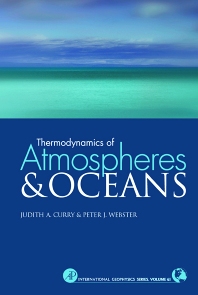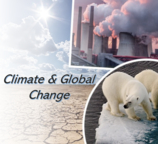-
 EAS 4470/6532 - Large-scale Atmospheric Circulation
EAS 4470/6532 - Large-scale Atmospheric CirculationThe tropics is often considered as the driver of the atmospheric general circulation, exporting the excess energy it receives to higher latitudes. It hosts some of the most complex and impactful climate phenomena. For example, the strongest natural variations of climate, the El Niño and the Southern Oscillation, occur in the equatorial Pacific Ocean. The largest seasonal variation of the hydroclimate is associated with the monsoons, which are deeply embedded within the tropics.
The course is designed to provide an introduction to the phenomenology and dynamics of large-scale atmospheric variations in the tropical regions having time scales of a month and longer. It complements the other dynamic courses at Georgia Tech that focus primarily on the mid-latitude regions. Using papers from the scientific literature, the course overviews the basic characteristics, underlying physics, and current status of several large-scale atmospheric phenomena. Students also learn by experimenting with an atmospheric circulation model. Topics include the Inter-Tropical Convergence Zone, the Madden Julian Oscillation, the El Niño-Southern Oscillation, and the Monsoons.
-
 EAS 6140 - Thermodynamics of Atmospheres & Oceans
EAS 6140 - Thermodynamics of Atmospheres & OceansThermodynamics are inherent to the atmosphere and ocean. Winds and ocean currents owe their existence to the thermodynamic imbalance that arises from the differential heating of the Earth's surface by the sun. A key ingredient in the thermodynamic processes is water, which is able to change between three phases in Earth's climate. The formation of cloud and sea ice increases the Earth's reflectivity and cools the climate. On the other hand, water in its gaseous form has strong a greenhouse effect that acts to amplify the surface warming from increasing carbon dioxide. The thermodynamic feedbacks associated with water are key to understanding climate variability and the overall stability of the climate system.
The main objective of this course is to apply thermodynamic principles to understand the role of water in the Earth's climate system. The course closely follows the textbook "Thermodynamics of Atmospheres and Oceans" by Curry and Webster. It starts by developing the basic concepts of classical thermodynamics that are important for understanding the climate system. These basic concepts will then be applied to address major processes in the atmosphere and ocean, including cloud formation, thermohaline processes in the ocean and heat transfer in sea ice. The course finally delves into specific climate topics that bear a substantial thermodynamic component, including heat transports, hydrological cycle and climate feedbacks.
-
 EAS 4410 - Climate & Global Change
EAS 4410 - Climate & Global ChangeClimate change is among the greatest challenges facing humanity today. The course breaks down the scientific underpinnings of how increasing atmospheric greenhouse gases affect the global climate. By looking at the problem of climate change from multiple angles, students get a decent view of how a modern climate scientist works. The course also addresses the impacts of climate change and discusses the pros and cons of potential solutions. By the end of the course, the student should have a well-rounded understanding of the modern climate change and will be able to make well-informed assessments of new developments as they arise.
Students will be exposed to science from different fields, but no prior knowledge of any of these fields is required. The course consists of 9 Chapters, arranged into four major themes of climate change: science, evidence, impact and solution. On average four lectures are devoted to each chapter, including three regular lectures where the instructor will teach the essential concepts and one discussion lecture where either the instructor will present a special topic or students will discuss previously assigned reading materials.